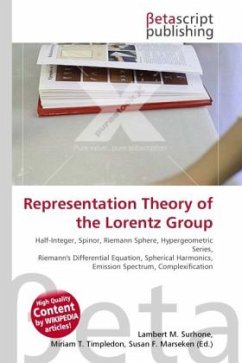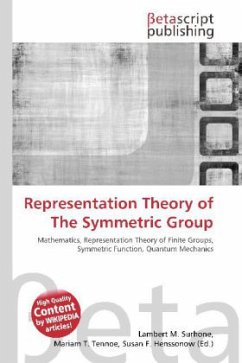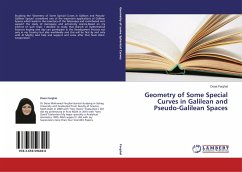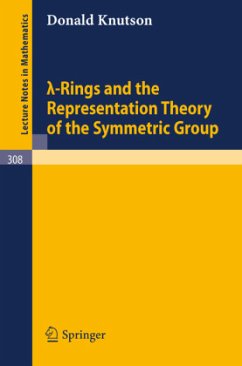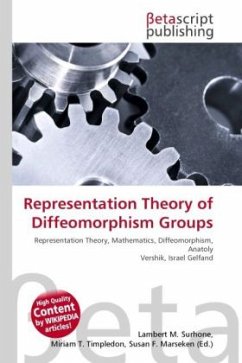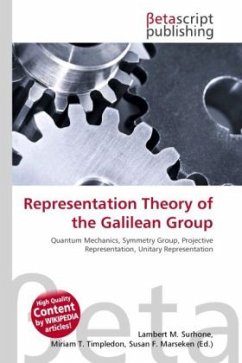
Representation Theory of the Galilean Group
Versandkostenfrei!
Versandfertig in 6-10 Tagen
19,99 €
inkl. MwSt.

PAYBACK Punkte
10 °P sammeln!
High Quality Content by WIKIPEDIA articles! In mathematics, a source for the representation theory of the group of diffeomorphisms of a smooth manifold M is the initial observation that (for M connected) that group acts transitively on M. A survey paper from 1975 of the subject by Anatoly Vershik, Israel Gelfand and M. I. Graev attributes the original interest in the topic to research in theoretical physics of the local current algebra, in the preceding years. Research on the finite configuration representations was in papers of R. S. Ismagilov (1971), and A. A. Kirillov (1974). The representa...
High Quality Content by WIKIPEDIA articles! In mathematics, a source for the representation theory of the group of diffeomorphisms of a smooth manifold M is the initial observation that (for M connected) that group acts transitively on M. A survey paper from 1975 of the subject by Anatoly Vershik, Israel Gelfand and M. I. Graev attributes the original interest in the topic to research in theoretical physics of the local current algebra, in the preceding years. Research on the finite configuration representations was in papers of R. S. Ismagilov (1971), and A. A. Kirillov (1974). The representations of interest in physics are described as a cross product C?(M)·Diff(M). We know the reps of SL(n, R) are simply tensors over n dimensions. How about the R+ part? That corresponds to the density, or in other words, how the tensor rescales under the determinant of the Jacobian of the diffeomorphism at x. (Think of it as the conformal weight if you will, except that there is no conformal structure here). (Incidentally, there is nothing preventing us from having a complex density).



